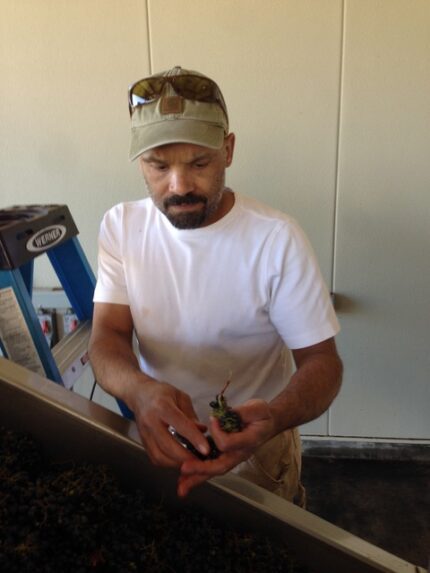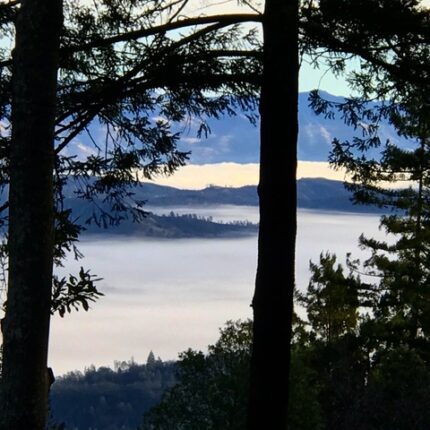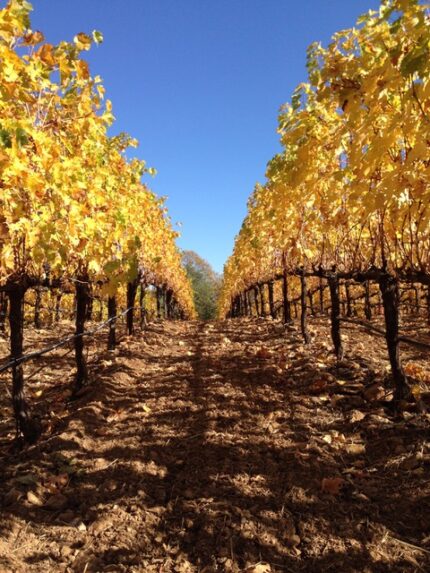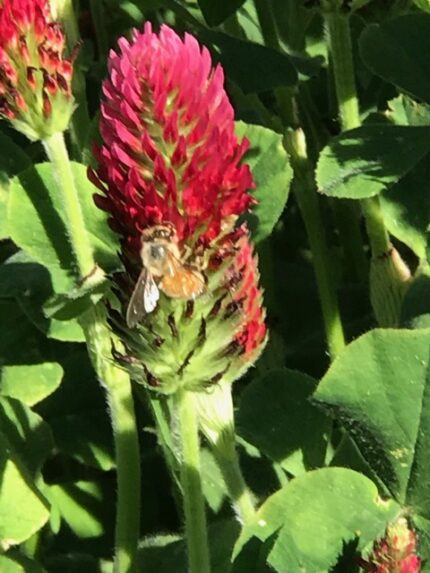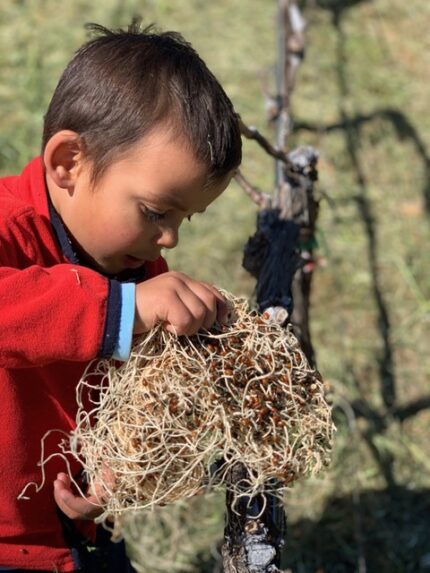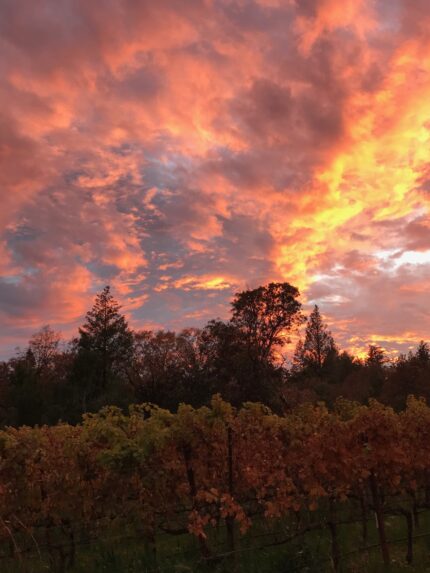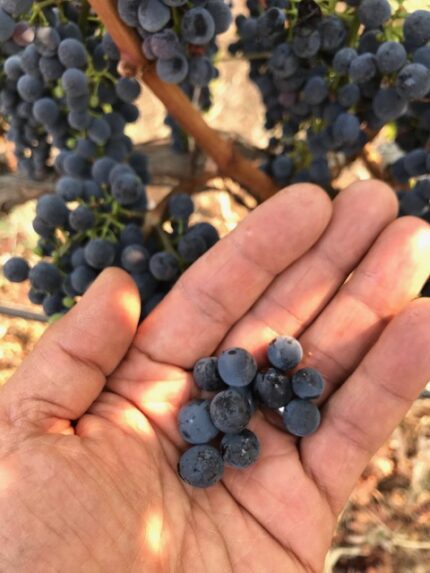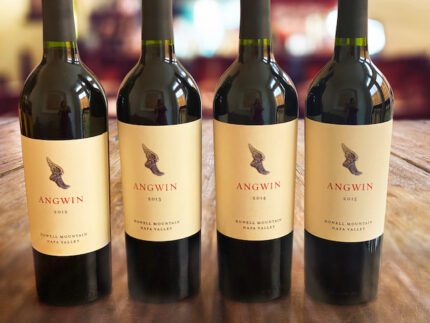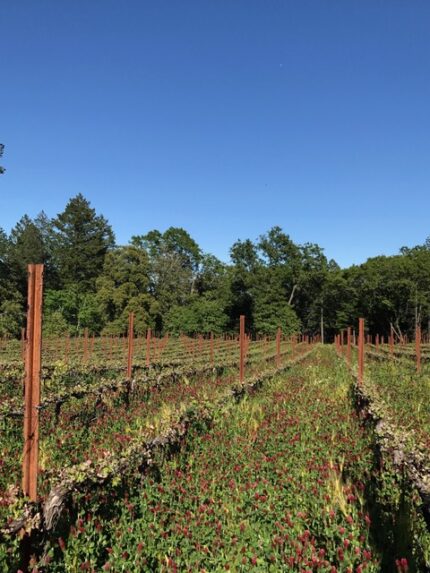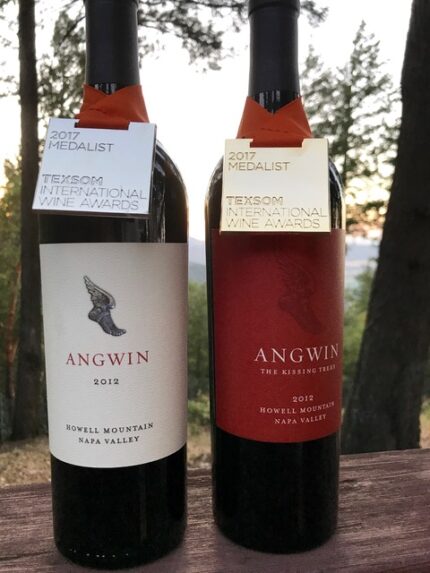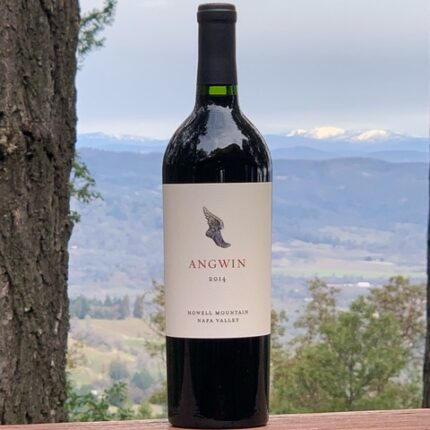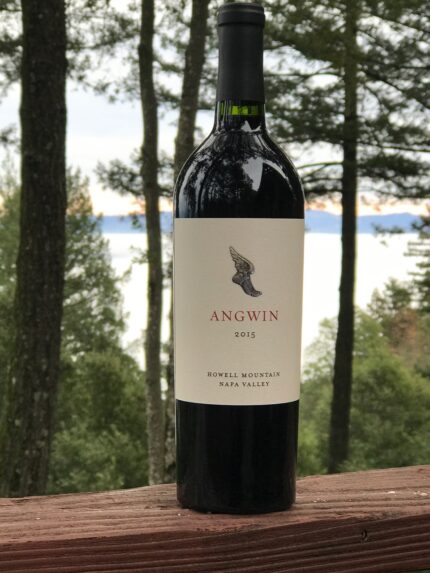Jon Larson, Proprietor and Winemaker of Angwin Estate Vineyards, Photo Courtesy of Angwin Estates
Jon Larson is the epitome of the modern day Renaissance Man – the precision required with his medical background; the discipline of a former state championship team rugby player and the sensory analysis and experimentation of his winemaker job at Angwin Estate Vineyards.
It takes a bit of time to truly unravel a conversation with Jon. In fact, we had three. One where we tasted Angwin Estate Vineyard wines and two where he told me his story. We could have continued to talk as I feel I only scratched the surface.
Photo Courtesy of Angwin Estates Vineyard
Coming back to Angwin (story to follow) was a return to his childhood. His parents moved from Los Angeles in the 1970’s and purchased land which was planted with fruit trees, table grapes and vegetables. Location has its privilege as some of his best friends came from winemaking royalty — Sarah Richards, whose father founded Spring Mountain Vineyards, and Lisa Togni, who is the daughter of well-known Winemaker Philip Togni who worked as Chappellet, Cuvaison and now Philip Togni Winery, who served as Jon’s most important mentor.
Medicine was the path that Jon thought he was destined to follow, and he studied Molecular, Cell and Developmental Biology at Princeton. “I am a disaffected nerd,” he says. “I am the type that will take something apart just to see how it works.”
He told me about how his thesis advisor recommended a project that rapidly imploded and he was left scrambling to save it. It revolved around bringing two mice together with genetic constraints with the sole goal of making them mate.
“No matter how much Al Green, wine and water I provided, I could not get make it happen,” Jon said. Sadly, the mice all died, and he was left with an unproven thesis that he had to defend. He recalls immediately going into defensive mode and reading everything he could to prepare for his inevitable presentation. He describes his appearance – an overweight guy in an ill-fitting blazer sporting a Mohawk. In comparison, he remembers a well-dressed woman, “the first chair in any orchestra,” running out of the room reduced to tears after her presentation. In spite of his fears, his well-prepared strategy worked – he got an A- on defense and a C on his thesis.
He continued on to the University of Wisconsin School of Medicine and Public Health. But his world was rocked when his mom died. He went home for two weeks missing school and also rugby. There was no grace from either the school or his coach who refused to play him in the first game of the national championship (which the team ended up losing). He informed the school he had spent two weeks on the cardiac surgery residency as an elective over his vacation, so he hadn’t missed any school. The school decided to take that time as a credit.
Photo Courtesy of Angwin Estate Vineyards
The vineyard started in 2002, when he received a call from his brother Bjorn (owner of Napa’s Bjorn Vineyards) who told him he was working on a job nearby and it was the last chance to plant a vineyard. They planted around two acres of vines on 49 acres nearly on the top of Howell Mountain. The vineyard is planted with ENTAV clone 169 at nearly 2,200 feet above sea level at the top of the eastern edge of Howell Mountain. They only farm Cabernet Sauvignon planted in rocky volcanic soil. This has made tending the vines and water management a challenge, but the fruit truly reflects its sense of place. He began by just selling grapes, until 2011 when he decided to make the first vintage of wine during a challenging year in Napa Valley.
While working in residency at the University of Nevada, Reno — he met Angela, who was in medical school and they later married. Jon went on to general practice in Iowa, where Angela completed her residency in Anesthesia. He went on to train in Thoracic surgery at Case Western Reserve in Ohio and at the University of Minnesota in Minneapolis.
After struggling to find his next job, he took a super fellowship at Penn State Health Milton S. Hershey Medical Center. He found the nurses there to be beyond disrespectful. Instead of calling him Dr Larson, the nurses insisted on calling him Jon. When he insisted on being called by his title, the nurses called the National Security Agency and reported him as an enemy combatant. The NSA sent three armed men in an unmarked van.
Dr. Larson was paged to the hospital lobby and no one would tell him why, just that he needed to go urgently. Imagining that one of his patients was in distress, he ran to the lobby to be confronted by three armed men. They asked him to identify himself, informed him that the could not confirm his identify and that he would have to go with them in the van. Jon provided his driver’s license and hospital identification. This was not enough for the men. They then kept insisting that he go with them. They refused to produce any badge or identification. When it became clear he would not go, they threatened to shoot him multiple times. “I said, go ahead and shoot me, you are about to shoot a board certified surgeon in a white coat, Jon said. “Go ahead I’ll make you famous.” They told him that they will make the footage disappear. People will cell phones started to gather. That traumatic experience led to a personal crisis that ended in him being let go.
Then Jon went to interview for a promising job at the University of Mississippi. He went to look at the job twice and he’s married to a white woman. And it’s Mississippi. Jon asked his potential employers what it would be like and they told him not to worry. He finally found one black guy who was a general surgery resident and he told him, “here at the University of Mississippi, it’s like any other University and you are probably ok. But right over there (points in the distance, out the window), it’s still Mississippi.” He realized he loved cardiac surgery, but his wife is Canadian and moving to Mississippi would have just been too much of a leap.
And, then there was the state of the vineyard. The vineyard needed significant work as the person farming the vineyard had lost control – from diseases to nutrition to pruning – nothing seemed to be working. Jon talked about a time where he and Angela had to spray in the middle of the night and the fruit looked awful. It was a cool year with lots of rain and Jon describes it as a time where he sat “crouched in the Rodin thinker position” for a majority of the time among the vines sampling grapes trying to preserve the best fruit.
Photo Courtesy of Angwin Estate Vineyards
He talked about the moment where he tried the wines. “It was like a flower,” he said. “It was beautiful in a way as it opened and changed.” We talked a lot about real beauty in the world. “In society, it is a concept to acquire the latest and greatest thing; it makes you want. You see that certain wine labels often equate a certain symbol to some that you’ve made it. I don’t think that is beauty. Beauty gives and continues to give. You instantly recognize it.”
Arek, their youngest son, sprinkling ladybugs into the ladybug bedding, Photo Courtesy of Angwin Estate Vineyards
That was the year of making long-term farming decisions like enriching the existing the soil using organic processes ensuring biodiversity, planting wildflowers other vegetation and adding desirable insects to the cover crop and canopy as well as canopy management and the way they farm. “We farm with a profound respect for the complex relationship between the vine, the soil, and the forest,” he said.
Photo Courtesy of Angwin Estate Vineyards
Protecting your land is a defensive responsibility – you must make sure you leave your land better or as if was went you started and not make decisions that are unnatural. While he does not hold an organic certification, he farms using organic practices.
Photo Courtesy of Angwin Estate Vineyards
The winemaking approach is also simple with the goal of having the fruit speak for itself. Every decision that he makes to designed to make the wines better and to make sure it is a perfect reflection of the year – either good or bad. It’s an attention to detail – how the fruit is sorted, when its harvested, how the wine is made (cold soaking, classic yeast, careful fermentation and barrel aging) to the oak used, shows the meticulous process from grape to glass.
We talked about the recent fires and how that will impact Angwin. They are currently figuring out the impact of smoke taint as the fire was close and the smoke was thick. He talked candidly about the same issues that happened in the 2015 and 2017 fires when capacity overwhelmed the testing labs. Wineries have to make picking decisions that are costly, and the test results just won’t be processed in time, resulting in gut decisions. Worst case scenario if there is smoke taint, he won’t make wine or if the wine is not up to his quality, it will be declassified. This has never occurred with past fires, so he’s keeping his fingers crossed. So far, he’s hopeful with the micro ferments he’s done so far and the location of his winery with the nightly winds, that all will turn out okay. But he’ll never sacrifice quality. Note: as of this weekend, there is another one burning. As of the time of publishing, the winery is safe.
Then it was time to taste a vertical of the wines from 2012 to 2015. We were joined by Scott Barber, Master Sommelier and Founder at Green Pin Wines, who is a friend that I know from his time in Dallas. Angwin also makes a second label “The Kissing Trees,” that I didn’t sample that is known for being bolder than its counterpart.
Photo Courtesy of Angwin Estate Vineyards
Jon opened up the conversation talking about how the wines change from year to year and used the flower analogy again. “It doesn’t get any less complex during any stage of its life. Wine, after all, is a product of controlled spoilage, age and change,” he said. As we shifted from year to year of the verticals, I realized what sage advice he gave.
Here was our vertical line-up, which were all opened with a Coravin, seven hours prior to our tasting. These are far from typical high alcohol Napa Cabernets, they are modeled after Bordeaux wines – they need time to open and show their perspective and flourish (and they do):
Photo Courtesy of Angwin Estate Vineyards
2012 Angwin Estate Cabernet Sauvignon – this was definitely a ripe and opulent year. I tasted some green notes, a bit of cooked bell pepper, but it added to the structure of the wine instead of deterring. Also notes of orange peel, blackberry, dried rose petal, pine needle, sage and coriander. This was a wine that kept evolving over the day and has continued its evolution every time I tried it.
2013 Angwin Estate Cabernet Sauvignon – this was considered an ideal growing year known for wines that are intense. In the glass, the wine looked old, but tasted young. I tasted lots of bright blackberry fruit, wet earth, cedar box, graphite, black fruit, citrus at end with a great structure. This was delicious and would benefit with the gift of time.
Photo Courtesy of Angwin Estate Vineyards
2014 Angwin Estate Cabernet Sauvignon – described by Jon as the “Goldilock’s wine” was the crowd pleaser of the bunch. It’s a generous and lush wine. I tasted notes of purple flowers, roses, dark fruit, graphite, earth, spice and cedar.
Photo Courtesy of Angwin Estate Vineyards
2015 Angwin Estate Cabernet Sauvignon – this wine is the newest release and was described as a “heartbreaker” by Jon due to the hard frost and drought that resulted in very small berries. Jon talked about picking what they could. “My sweat is in this vintage,” he said.
This was a cornucopia of flavors and continued to evolve. It was dense and savory. It needed time to open, but once it did, it was complex and holistic. It speaks to its place. I tasted rose petal, freesia, raspberry, cedar, graphite, vanilla, sage, licorice, strawberry, cherries and cigar box. It has a long finish and almost tastes like a Grand Cru Burgundy.
When I asked Jon about his favorite of the tasting, this was clearly the one that had his soul. “It has every component that you would expect from this vintage and will continue to evolve.”
We ended our discussion by touching on his personal philosophy to overdeliver on quality of his wines. While they are premium priced due to scarcity and small lot quantities, the wines have breadth and take you through every aspect of where they come from.
Powered byWordPress Customer Service

